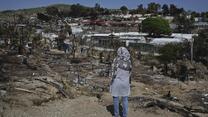Seventy years ago, 145 countries signed the 1951 Refugee Convention in the wake of World War II, when the displacement of millions of people across Europe shed light on the need for humanitarian protections for those forced to flee violence and persecution.
The Convention and its related Protocol obligate states to standards of treatment and protection of asylum seekers and refugees, including the principle of non-refoulement, which precludes states from returning people to a place where they risk persecution. Since 1951, 50 million people have been protected under the Convention’s umbrella. Yet, today, the consensus that forged the Convention and the international cooperation that underpins it are being increasingly undermined.
Over the past several years, we have seen a decline in resettlement, a hardening of refugee inclusion and asylum policies, and humanitarian aid lagging behind needs, across the regions that once most firmly upheld these protections. This report outlines how the US and Europe were key players at the time of the Convention's creation - now is the time for these same actors to reinvigorate it.
Report



